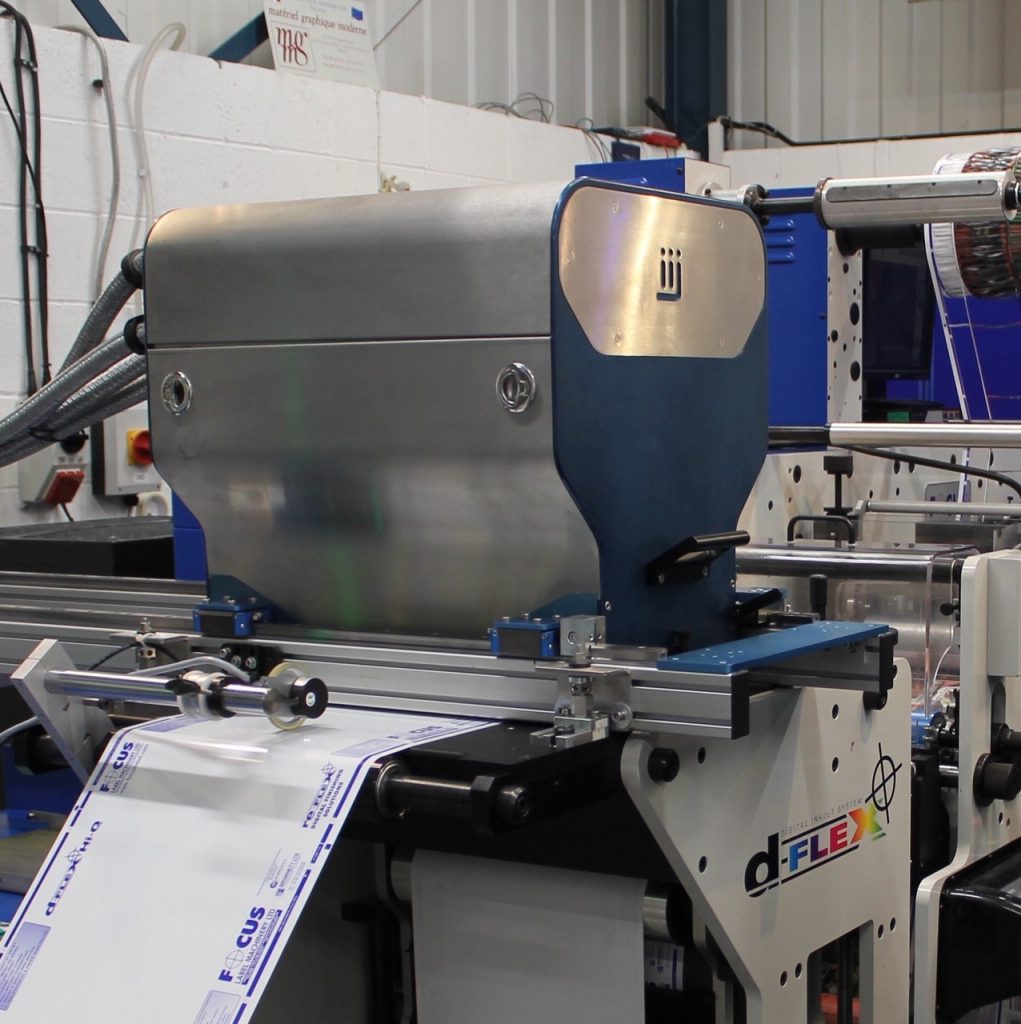In focus
But how do you know if hybrid is the right choice and which option should you chose? Director of business development at Industrial Inkjet (IIJ), Paddy O’Hara, stated, ‘If you are producing complex labels that need additional processes, such as low cost flexo background and spot colours, foiling, varnishing, embossing, etc, then an on-press inline solution is the perfect way.’
IIJ is the sales and technical support centre for Konica Minolta industrial inkjet heads outside of Asia, and works with Focus Label, which integrates the IIJ ColourPrint module and software into its d-Flex Hi-Q press, a cost-effective way of going hybrid.
‘Some of our competitors might be able to offer an efficient digital machine costing around £300,000 to £350,000 for labels, but then they will probably need a finishing line that might mean another £100,000 investment,’ said Antony Cotton, technical sales manager for Focus Label. ‘We provide a solution that can print flexo or digital with virtually no set-up time and that is really attractive, particularly as our capital investment cost will be around half what would be charged by competitors. The return on investment will be a lot quicker, certainly within three years.’
Mr Cotton added, ‘Integrating digital systems into existing flexo presses is the future because of the way the label industry is going. Combining our expertise in labels with IIJ’s in UV digital inkjet, as well as having the best printheads on the market for industrial applications, we know this is a partnership that will work well and provide huge opportunities for customers to grow their business.’
 IIJ inkjet module on the d-Flex press from Focus Label Machinery
IIJ inkjet module on the d-Flex press from Focus Label Machinery
Retrofitting
An inkjet print module can be a cost-effective way into digital. Adding variable image and text capabilities, they make a great complement to existing flexographic printing presses by broadening applications as the press effectively becomes a hybrid in its own right. And as the print speed of these engines has increased, digital no longer slows
down production.
IIJ has been supplying inkjet engines for retrofitting since 2010. Mr O’Hara said, ‘For a small label company, adding another piece of standalone hardware for near line production can be problematic and lead to additional costs of ownership. There is the extra space, services, staff, and storage of WIP etc. This is where hybrid solutions score big. Especially solutions that do not require extensive surgery on the press or require the press to be extended. Putting one of our ColourPrint HiQ modules onto an existing flexo press gives the user the power to include variable high-resolution colour images and text on multi-process labels.’
He added, ‘And thanks to the use of Konica Minolta’s extremely compact high resolution KM1800i printheads, IIJ’s inline inkjet modules are some of the most compact on the market. This allows high quality digital label capabilities to be added to an existing press, without the need to remove multiple flexo stations, and also makes it easier for them to be added to older equipment than a system with a longer print station. The compact footprint added to the use of high efficiency LED curing allows the system to be used exactly when and where it’s needed, especially when used on a rail mounted press adaptor.’
Mr O’Hara also highlighted the fact that the press speed is governed by the slowest process, saying that for a long time inkjet solutions have been offered at between 25 to 50m/minute, which can cause an issue for inline production as it reduces production speed, undermining the value-add of the digital solution. He said, ‘IIJ label modules typically operate at 80 to 100m/min, and for text and variable data, speeds from 100 to 200m/min.’